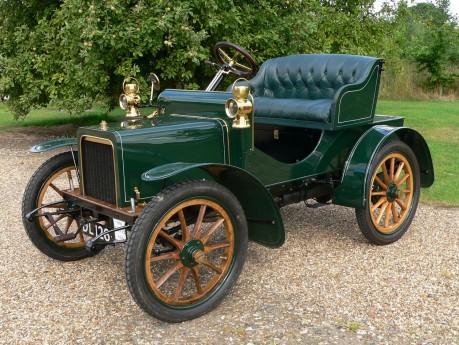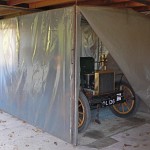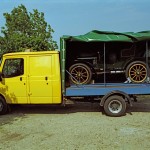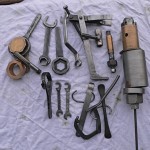I have had a couple of bad setbacks. The crankcase that was supposed to come over in a shipment did not arrive and I do not know for sure where it is at the moment! I definitely need it to get the car on the road. The second problem has been the very poor quality of the water manifold castings that I got from Australia, they have required extensive remedial work to make them usable. they are still far from the quality I would like on the car.
a
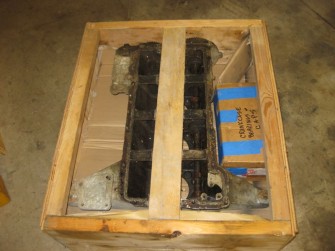
The crankcase was all boxed for shipment months ago, but still hasn't arrived
a
On a more positive note, the availability of blueprints for any part is an enormous help. I have recently used these in manufacturing a footrest, a robe rail, a magneto strap and leather traps for securing the spare tyres.
a
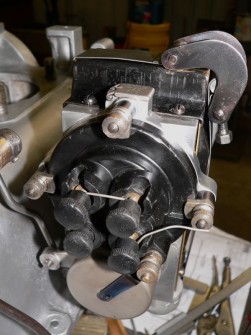
The new strap for holding the magneto in place
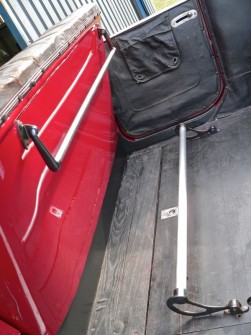
The new footrest and robe rail
a
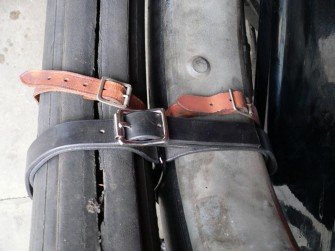
The old and new straps for the spare tyres
a
The water manifold castings that I got from Austrailia were of very poor quality and have needed extensive remedial work to make them usable.
a
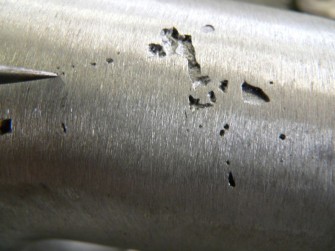
Just one of the problems with the castings
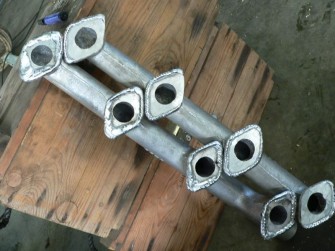
Essential remedial work to the manifold castings in progress
a
a
While repairing the brackets for the spare tyres I found, after cleaning, that the tinwork under the rear seat was full of holes and have replaced this with a new panel.
a
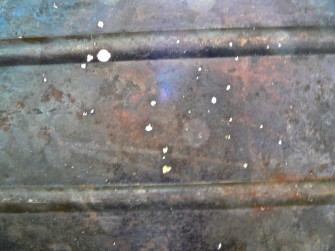
The tinwork under the rear seat was full of holes
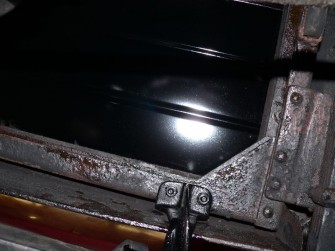
The replacement tinwork under the seat and the repair of the spare wheel carrier
a
The straps that support the weight of the hood had been nailed into the wooden framework of the rear seat, splitting the wood. The woodwork has been strengthened and the straps will be fixed to the proper anchorage.
a
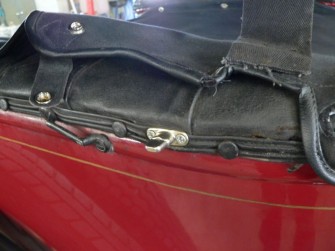
The wooden framework at the top of the rear seat has been repaired
a
Some parts of the magneto linkages were missing and I have had to work out the correct lengths. The throttle linkages have been repaired.
a
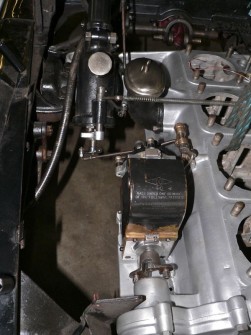
Throttle and magneto linkages










